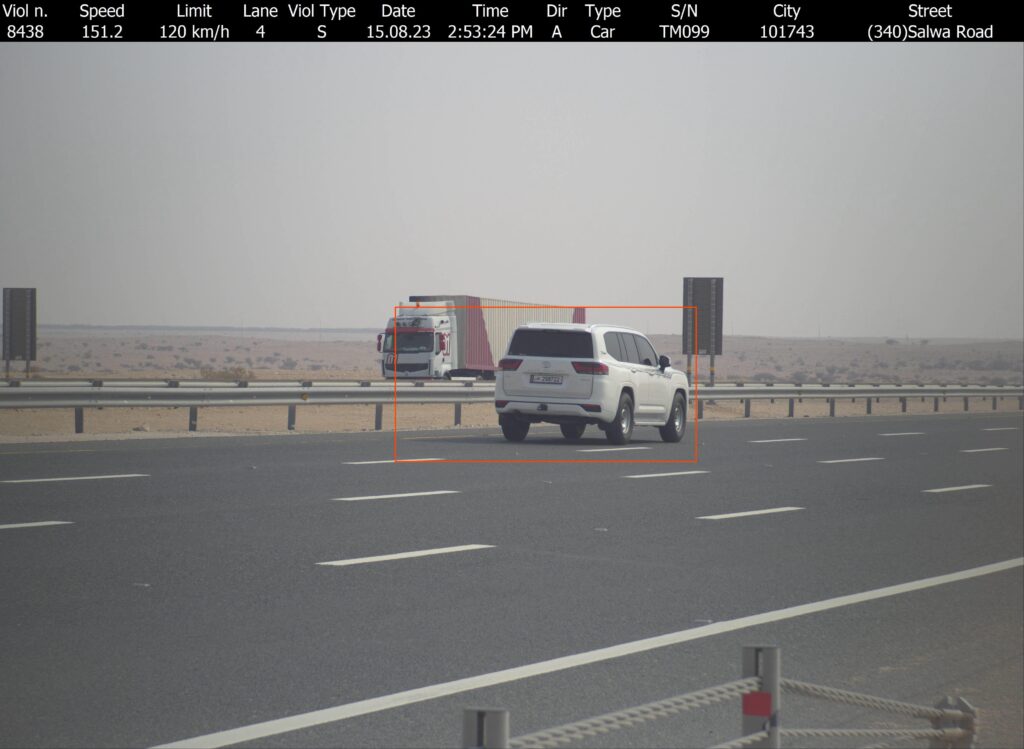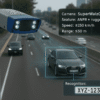Keeping roads safe has become a challenge for authorities worldwide, due to growing traffic rule violations, including distracted driving and overspeeding. Traffic enforcement cameras have been instrumental in ensuring compliance, even on busy roads and in challenging environments.
Have you ever wondered how these systems detect violations in real-time? This blog takes you behind the scenes to help you understand how sensors (including Radar), AI-driven image analysis, and ANPR work together to make this happen.

Understanding How Traffic Enforcement Cameras Work
The secret behind effective traffic enforcement lies in the underlying technology used. You can deploy a reliable camera system to detect multiple traffic violations in real-time and take necessary disciplinary actions.
Let’s uncover the layers of this technology-driven solution, taking your traffic enforcement measures to the next level.
Detection Through Sensors
Intertraff’s distracted driving solution has sophisticated sensors, including an OIML-certified multi-tracking radar and high-speed imaging. These sensors effectively monitor approaching and receding vehicles.
Now comes the most interesting ‘detection’ mechanism. The system triggers automatically when specific conditions are met. To put it simply: the radar measures vehicle speed and trajectory, while the cameras continuously scan the driver’s compartment. When a potential violation is detected—such as the use of a mobile phone, failure to wear a seat belt, or another distracted behavior—the system captures high-resolution images and video evidence in real time.
This automated process ensures that only relevant events are recorded, reducing unnecessary data and simplifying case review for enforcement authorities.
The Role of AI and Advanced Computer Vision
Modern-day traffic enforcement cameras utilize Artificial Intelligence and Machine Learning algorithms. The latest technologies, such as Edge AI processing, enable real-time detection without requiring consistent communication with an external server.
For instance, distracted driving cameras capture an image or a clip of a driver engaged in unsafe activity while driving. The AI-driven algorithms trigger the system in such an incident, and the system also records the violation with the necessary details.
The same systems are programmed to detect mobile phones. Suppose a driver is using a mobile device while driving. In that case, the AI and ML-based algorithms enable the high-resolution images and video clips captured by the traffic enforcement cameras to trigger the system, allowing it to detect and record a violation.
Similarly, the camera systems can effectively detect other violations, such as non-compliance with seatbelts and overspeeding.
Automatic Number Plate Recognition (ANPR)
So far, we have discussed the mechanism for detecting violations. However, does the story conclude there? Not exactly. Traffic enforcement cameras help authorities collect visual evidence of traffic rule violations. Additionally, the license plate recognition software provides the license plate details of the specific vehicle.
As we discussed earlier, these cameras continuously monitor vehicles, covering multiple lanes and a large area. The ANPR system executes in the following steps:
- Enhance the captured vehicle images,
- Separate license plates (the rectangle),
- Divide them into characters,
- Recognize the characters applying region-specific logic and rules, and
- Transmit them in a structured format for further processing.
Apart from electronic toll collection without stopping vehicles, the concerned authorities can also execute traffic enforcement by deploying the most reliable traffic cameras.
The license plate information, along with other precise data, such as the date, time, and location of violation, strengthens the visual evidence. The technology-driven solution is transforming traffic enforcement worldwide.
Wrapping Up
The blog narrates the story behind the scenes, helping you understand how these modern, innovative camera systems detect traffic violations in real-time. Intertraff’s traffic enforcement cameras have proven their accuracy and reliability. Choose them as your traffic enforcement and surveillance partners for effective execution and splendid performance of your systems.
FAQs
Yes. Intertraff’s traffic cameras perform real-time distracted driving detection.
Intertraff’s LPR software enhances vehicle images, segments license plates, recognizes characters using OCR with region-specific rules and logic, and outputs the results in a machine-readable format (XML or JSON). It performs in real time with a high recognition accuracy rate, even under challenging conditions such as poor lighting, high vehicle speeds, or adverse weather. Accuracy is further reinforced through continuous training on regional plate formats and integration with quality camera hardware.
Yes. It depends on the camera configuration. Typically, it can detect multiple violations, including red light running, tailgating, Hard shoulder use, Wrong lane, and overspeeding simultaneously.
Yes. It depends on the camera configuration. Typically, it can detect multiple violations, including red light running, tailgating, Hard shoulder use, Wrong lane, and overspeeding simultaneously.
Yes. The cameras are effective at night. Intertraff traffic cameras detect violations in low-light conditions using either xenon or LED-based illuminators, available in both white-light and infrared versions.


